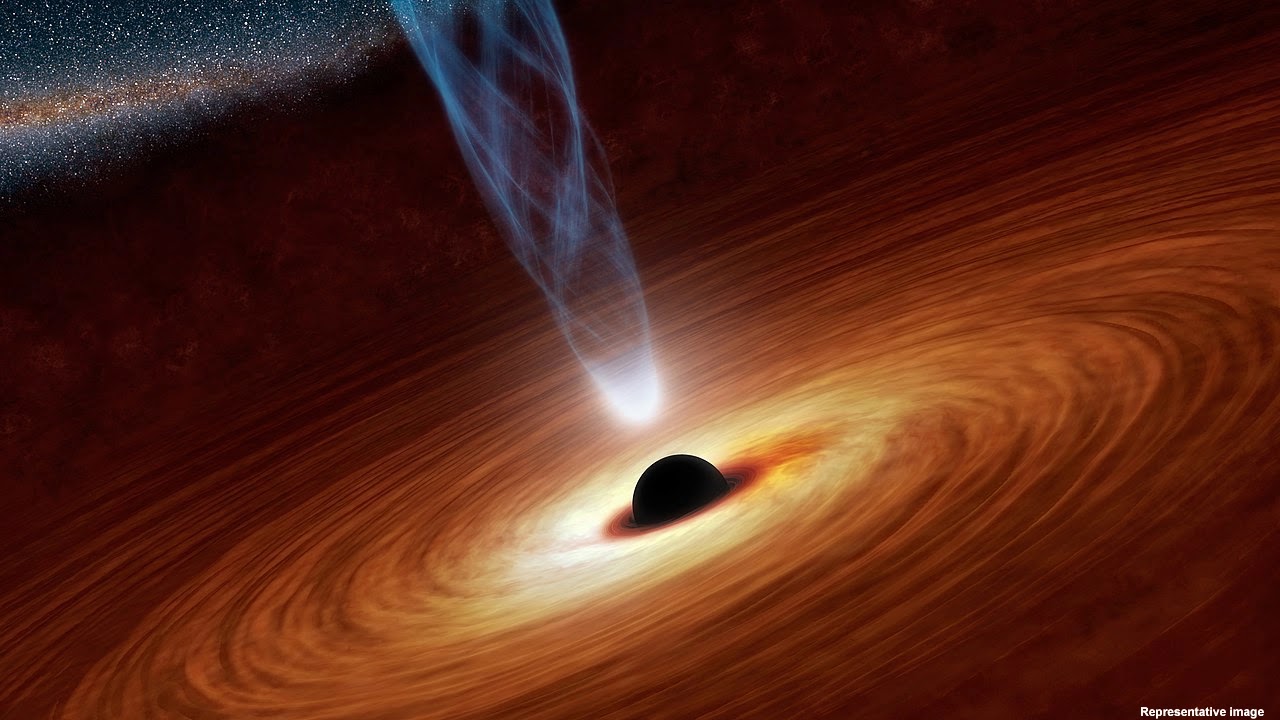
Astronomers Accidentally Discovered 3,000 Light-Year 'Jet Lobe' Of Dying Supermassive Black Hole
Black holes are classified into four types: stellar, intermediate, supermassive, and miniature. The most well-known way for a black hole to form is through stellar death.
When stars reach the end of their lives, most of them will inflate, lose mass, and cool to form white dwarfs. However, the most massive of these fiery bodies, those at least 10 to 20 times the mass of our sun, are doomed to become either super-dense neutron stars or so-called stellar-mass black holes.
Many large galaxies contain a supermassive black hole that is millions to billions of times more massive than the Sun and occupies the center of galaxies like the Milky Way. Some SMBHs are in an active galactic nuclei phase (AGN).
An active galactic nucleus (AGN) is a small region at the center of a much brighter galaxy than in a typical galaxy. It emits enormous amounts of energy in the form of radio, optical, X-ray, or gamma radiation and high-speed particle jets.
It is well understood that every AGN must eventually be turned off due to the mass limit of Supermassive Black Holes. However, scientists have never fully comprehended how or when this occurs. Researchers led by astronomer Kohei Ichikawa of Tohoku University in Sendai, Japan, believe they have discovered a clue.
After catching an AGN signal from the Arp 187 galaxy, a team of researchers from Tohoku University accidentally discovered an AGN nearing the end of its life span. According to the analysis, the AGN was recently quenched within the last 3,000 years.
The research team used light echoing to observe the interstellar death of a Supermassive Black Hole – a star so massive that it suffers a gravitational collapse, with masses millions to billions of times that of our Sun.
Using the Atacama Large Millimetre/submillimetre Array (ALMA) and the Very Large Array (VLA), the team accidentally discovered a jet lobe, but there was no signal from the nucleus. It represents the absence of AGN activity.
After further examination of the multi-wavelength data, they discovered that smaller features of AGN fade away as their photon supplies dwindle; however, their large-scale ionized gas region is still visible because photons take about 3000 years to arrive at the region's edge.
"We used the NASA NuSTAR X-ray satellite, the best tool to observe current AGN activity," Ichikawa explained. "It enables non-detection, so we were able to discover that the nucleus is completely dead."
Ichikawa also added, "We will search for more dying AGN using a similar method as this study," "We will also obtain the high spatial resolution follow-up observations to investigate the gas inflows and outflows, which might clarify how the shutdown of AGN activity has occurred."
The findings show that AGN turn-off occurs within a 3000-year time scale, and the nucleus becomes over 1000 times fainter during the last 3000 years.
The findings were presented earlier this month at the American Astronomical Society's 238th meeting, which was held virtually.

0 Response to "Astronomers Accidentally Discovered 3,000 Light-Year 'Jet Lobe' Of Dying Supermassive Black Hole"
Post a Comment